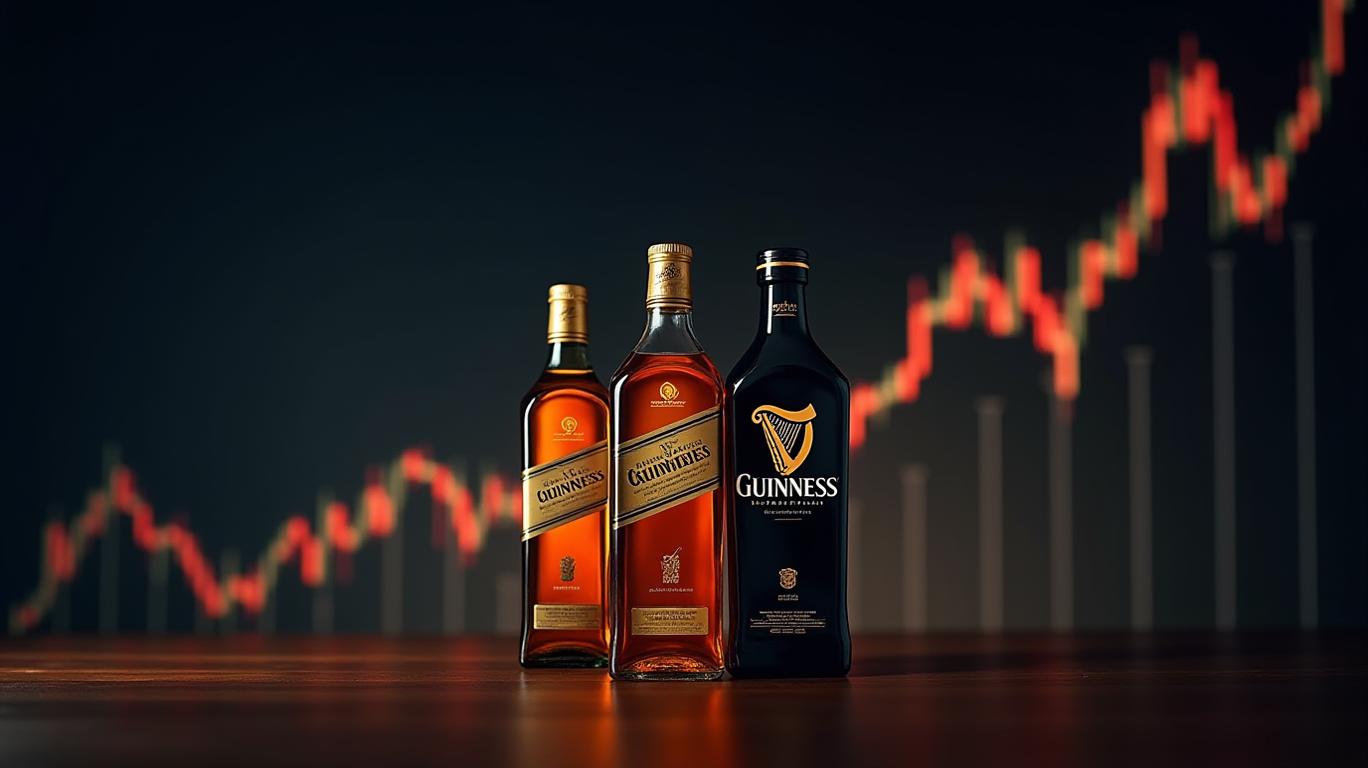Diageo: Navigating Tariff Headwinds to Unlock Value
Amid a storm of global trade tensions and macroeconomic headwinds,
(LSE: DGE) has seen its stock price plummet 44% since its 2022 peak, trading at a decade-low of £115.05 as of May 2025. Yet beneath the turbulence lies a resilient alcoholic beverage giant with premium brands like Johnnie Walker and Guinness, strategic pricing power, and a clear path to recovery. For investors willing to look past near-term pain, Diageo presents a compelling valuation opportunity—one that could deliver outsized returns as macro pressures ease and operational agility shines.The Near-Term Pain: Tariffs and Cost Pressures

The $150 million annual tariff hit Diageo faces—primarily from U.S. duties on tequila and Canadian whisky—is a key driver of its stock decline. These levies, which now account for ~45% of its U.S. sales, have squeezed margins and forced pricing adjustments. Compounding the issue, Diageo’s operating margins contracted 132 basis points in early 2025 due to rising costs and strategic investments. Meanwhile, a $20 billion debt pile and stagnant revenue growth (1H FY2025 sales dipped 0.6% YoY) have spooked investors, pushing the stock to its lowest level since 2013.
The data paints a clear picture: the stock has fallen from £206.66 in early 2022 to £115.05 today—a 44% drop—while peers like Pernod Ricard have stabilized. Yet this decline has created a rare opening for long-term investors.
The Long-Term Resilience: Brands, Pricing Power, and Cost Discipline
1. Premium Brands with Global Demand Stickiness
Johnnie Walker and Guinness are not just brands—they’re cultural touchstones with enduring appeal. In a world where Gen Z is moderating alcohol consumption, Diageo’s focus on ultra-premium segments (e.g., Johnnie Walker Blue Label) and emerging markets (e.g., China’s growing whiskey demand) offers a shield against moderation trends.
2. Strategic Pricing and Cost Savings
Diageo’s $500 million annual cost-savings initiative, announced in late 2024, targets inefficiencies in its supply chain and marketing spend. This program is already yielding results: management projects a 130 basis-point margin improvement by 2026. Meanwhile, its ability to pass tariff costs to consumers—Johnnie Walker’s 5% price hike in key markets saw minimal volume erosion—proves pricing power intact.
3. Free Cash Flow and Financial Agility
Despite the tariff drag, Diageo aims to hit £3 billion in free cash flow by 2026, up from £1.9 billion in 2023. This will fund debt reduction (targeting a net debt/EBITDA ratio below 3.0x) while maintaining dividends. A buyback program, though paused during cost-cutting, could resume as margins recover.
Why Buy Now? Valuation and Timing
The stock’s current price-to-earnings ratio of 14x is nearly half its five-year average of 23x—a stark undervaluation for a company with 6% average annual organic sales growth over the past decade.
Moreover, the tariff headwinds are not indefinite. U.S.-Mexico trade talks in 2026 could ease tequila duties, while Diageo’s shift to locally sourced Canadian whisky (reducing cross-border costs) mitigates 30% of tariff exposure. Factor in a potential Fed rate cut by late 2025, and the tailwind for consumer discretionary stocks like Diageo could be swift.
Risks and the 12-18 Month Horizon
No investment is risk-free. Prolonged inflation, a deeper recession, or a failure to curb costs could delay recovery. However, the 12-18 month timeframe aligns with three critical catalysts:
1. Tariff Mitigation Progress: By mid-2026, trade deals or internal sourcing shifts could reduce the annual tariff burden to ~$100 million.
2. Margin Expansion: The cost-savings program’s full impact should be visible by late 2025, boosting EPS by ~5-7%.
3. Valuation Re-rating: A P/E multiple expansion to 18x (mid-range of historical norms) would imply a 28% upside from current levels.
Conclusion: A Buy for Patient Investors
Diageo’s shares are priced for a worst-case scenario, yet its fortress brands, disciplined cost management, and $3 billion FCF target position it to rebound sharply as macro pressures ease. While the path is bumpy, the reward-to-risk ratio—14x P/E vs. 6% organic growth and ~£3.5 billion in net cash—argues for a buy with a 12-18 month horizon. This is a stock to own when markets begin pricing in recovery, not more pain.
Investors who act now may find themselves sipping to success—just like a perfectly poured glass of Johnnie Walker.

Comments
No comments yet